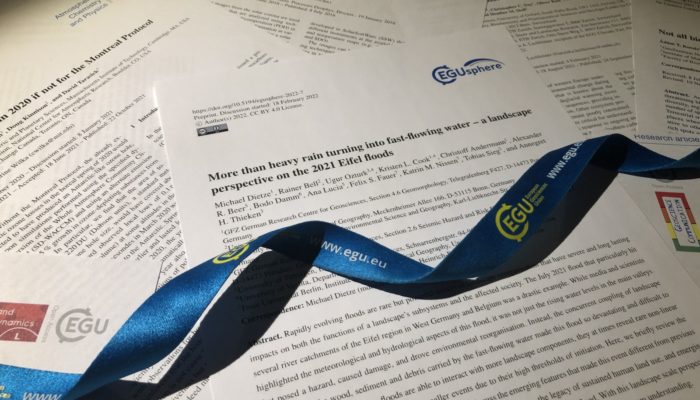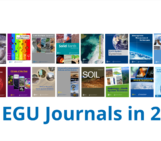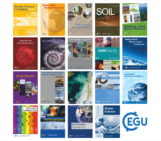
You have put in the hours, collected the data and written a great paper, but before you take your next steps you need to choose a journal in which to publish your work and there are a lot of factors in play. One of those, often discussed, is the Impact Factor, a number that each journal can use to demonstrate its ‘value’. Often a paper, once published, can be partly assessed by some people, based on the Impact Factor of the journal it was published in. But what is an Impact Factor and what should you know about how it works before choosing where to publish your research?
At its most basic, an Impact Factor is the number which represents the average number of times you can expect a paper recently published* to get cited in the last year. As metrics have become more and more present in the lives of researchers, we are sure you have heard debates about Impact Factors in your own research institutions. Basically what you need to know about the ‘conventional wisdom’ is that the higher the Impact Factor, the ‘better’ the journal can be considered… but it’s not actually that simple. We spoke with Eduardo Queiroz Alves, EGU’s Editorial Manager to get some insight into Impact Factors work at the EGU journals and what you should know when picking the journal that is right for you.
*this usually means within the last 2 years, but can be a different timescale depending on the assessment.
Hi Eduardo! To get us started can you explain why each journal can have several Impact Factor scores? Why are they sometimes different, and is one more reliable?
Hi Hazel! This is because these metrics are calculated in different ways and by different companies. Strictly speaking, the impact factor (IF) is a metric provided by Clarivate Analytics, and the annual Impact Factor is calculated by dividing the number of citations of a journal in a given year by the number of citable items published in that journal in the two preceding years. Additionally, our journals’ websites also list metrics such as the CiteScore, which is provided by SCOPUS and obtained via the ratio between the number of citations in a 4-year period and the number of articles published in that same period. These definitions explain why these metrics can vary considerably from one year to the other. The relevance of a journal metric for you may depend on the specific research field. Copernicus, our publisher, maintains a webpage that lists and explains the most relevant metrics for the EGU journals in more detail.
A high Impact Factor is often mentioned as one of the best indicators of the quality of a journal, and therefore the ones you should try and publish in. Is that actually the case?
No single metric should be the sole indicator of the quality of a journal. Because of the way in which these metrics are calculated, review journals and interdisciplinary journals, for example, tend to have the highest impact factors while subject specific journals may have lower impact factors despite being more relevant within their research communities. Because open access tends to increase the number of citations, disciplinary open-access journals often display higher impact factors when compared to their subscription-based counterparts.
Some of the EGU Journals don’t have any Impact Factor scores. Why is that?
These are our three youngest journals: Geoscience Communication, Geochronology and Weather and Climate Dynamics. New peer-reviewed journals that fulfil a series of requirements relating to quality and impact can apply to be included in the Science Citation Index-Expanded (SCIE) of Clarivate, but they don’t get their first Impact Factor score until a few years after their creation.
Although an application to integrate into the Science Citation Index-Expanded has been submitted for Geoscience Communication, Geochronology and Weather and Climate Dynamics, they are still in their start-up phase. To encourage their growth, there are currently no publication fees to publish in these journals – and you still get a full open access publication experience!
Moving away from the Impact Factor, what should you consider when choosing a journal to publish in?
There are several other important considerations! First, check if your manuscript fits the scope and the type of articles published by the journal. Prioritise open access publications, as they will increase the reach of your research and number of citations. It is also important to make sure the journal adopts ethical publishing practices and offers a rigorous and fair peer review. In the 19 open-access EGU journals, for example, the peer review process is public and interactive, meaning that the scientific community is invited to take an active role in the process. All reviewer reports, editor and community comments, and author responses are public, citable, and archived, ensuring a high level of transparency for our peer review process.
What advice do you have for anyone who has questions about publishing with EGU?
If you have any questions about our publication and peer review model, please reach out to me at editorial-manager@egu.eu and I will be happy to chat about anything you may want to know in more detail. For more journal-specific matters, please feel free to reach out to our Publications Committee.
Thanks for all your help Eduardo!
For more information about EGU’s Open Access Public Peer Reviewed Publishing system, you can check out blogs on the topic and the EGU website!
Further reading about the Impact Factor, provided by the EGU Publications Committee Chair, Barbara Ervens.
- Triggle, et al (2022) Requiem for impact factors and high publication charges, Accountability in Research, 29, p133–164
- Seglen (1997) Why the impact factor of journals should not be used for evaluating research, British Medical Journal, 314, p497
- Anonymous (2013) Editorial: Beware the impact factor, Nature Materials, 12, p89
- Hicks, et al (2015) Bibliometrics: The Leiden Manifesto for research metrics. Nature, 520, p429–431




